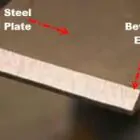People are so used to welding that they sometimes forget the significance of welding in our everyday lives. Welding is an important part of our lives, from the cars we drive to the buildings we live in. It is also used in almost every industry.
But the trade is changing quickly, and it needs to change to meet the needs of new generations. The average age of a welder, according to the American Welding Society (AWS). It is in the mid-fifties, and many are getting close to 60. These skilled workers are about to retire, and the problem is getting worse. This is because there aren’t enough skilled workers coming in.
Prediction
The AWS predicts that the US will have a shortage of about 400,000 skilled welders by 2024. In an industry worth more than $5.5 billion, this is a real problem. And it will only get worse because welding is used in so many different fields.
Different industries are starting to feel the effects of the lack of skilled welders. In 2018, both Fiat and Ford had problems with their cars because of welding problems. Because of a bad weld in the frame, Fiat had to call back 18,000 Jeep Wranglers. Ford had to recall 12,000 cars in North America because the pump welds on some of their cars were not done right. This kind of welding problem is also affecting other industries. When cracks were found in the tube of the UK’s new £31 billion nuclear missiles, the project had to be put on hold.
There’s no doubt that the welding industry is going through hard times, which means that new changes and trends are needed. Newcomers need to be interested in the trade. The need for skilled workers can and should be a call to action for people looking for work. So, what should happen next in the welding business? How can they deal with their problems?
Solution to create Awareness around the Significance of Welding.
Spreading the awareness regarding the significance of welding is required. For the problem to be solved, new technologies and methods must be used. Which can change the way things have always been done. It would bring the welding industry to the next level. One way to reach this goal is to use Augmented Reality (AR), which is one of the biggest tech trends in the world, to teach people how to weld.
AR technology can help newcomers learn by giving them the chance to learn in their own way and try out new things. This helps their learning process. From the trainer’s point of view, it means savings and no more accidents, which happen more often when people are just starting out. To sum up, Augmented Reality is the best way to find, train, and give power to the next generation of industrial workers.
Augmented Reality is being used more and more in welding training around the world, thanks to Soldamatic Augmented Training, the first AR-powered welding simulator. It is already available in more than 50 countries. And companies like Volkswagen, John Deere, Man, and Siemens are already using it to qualify better welders.




